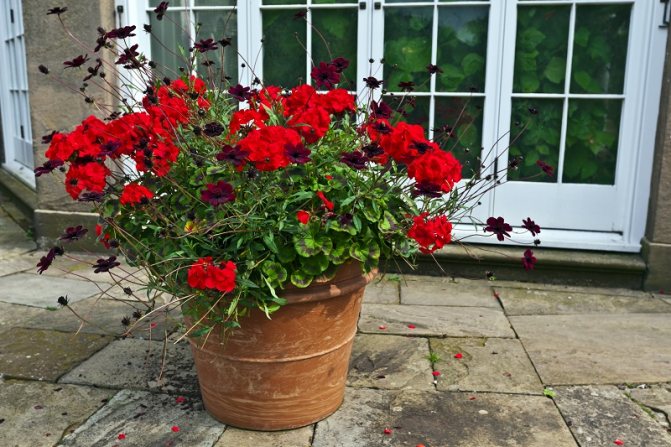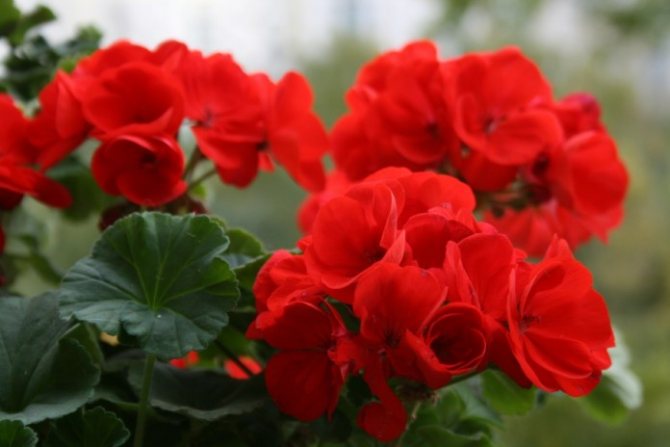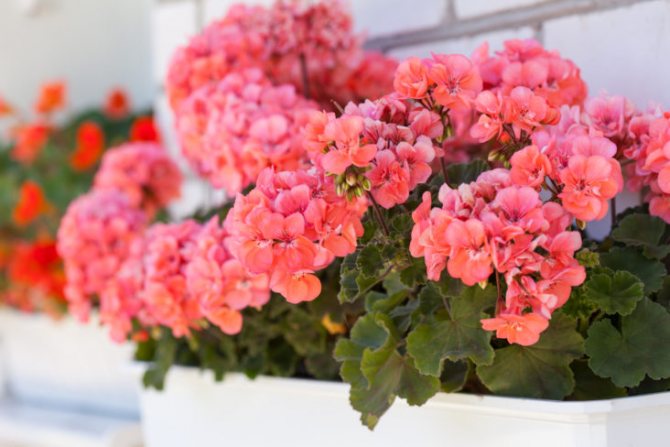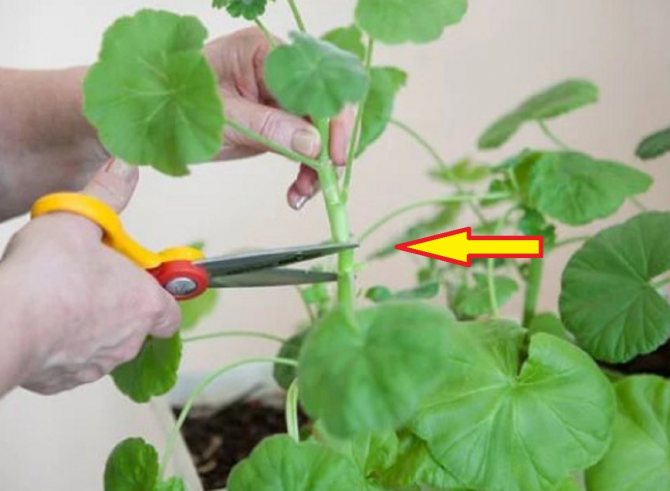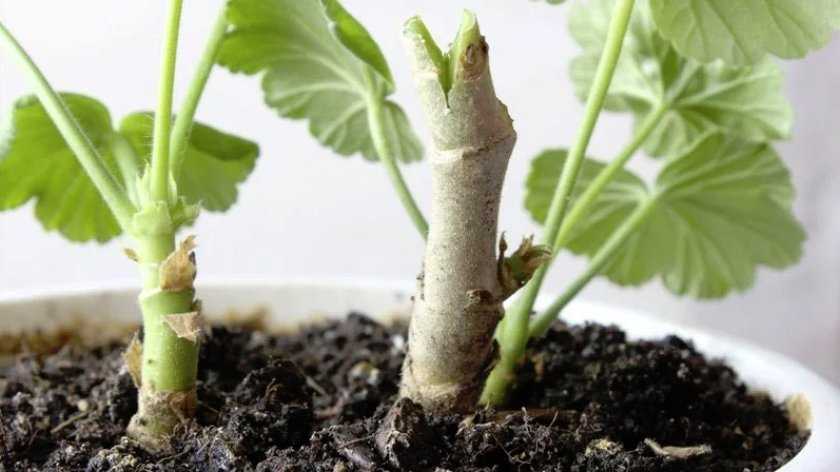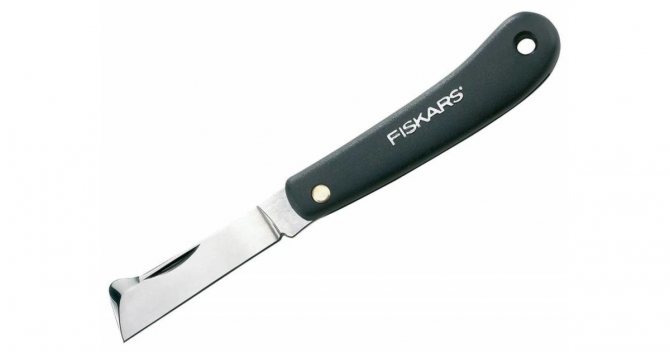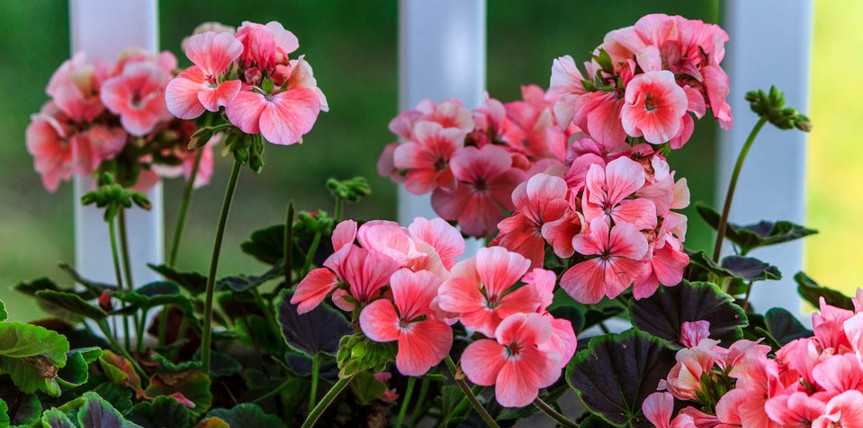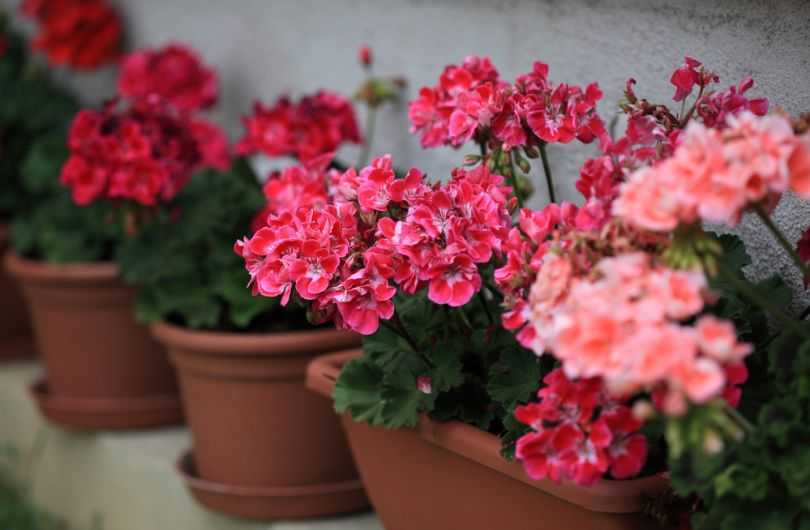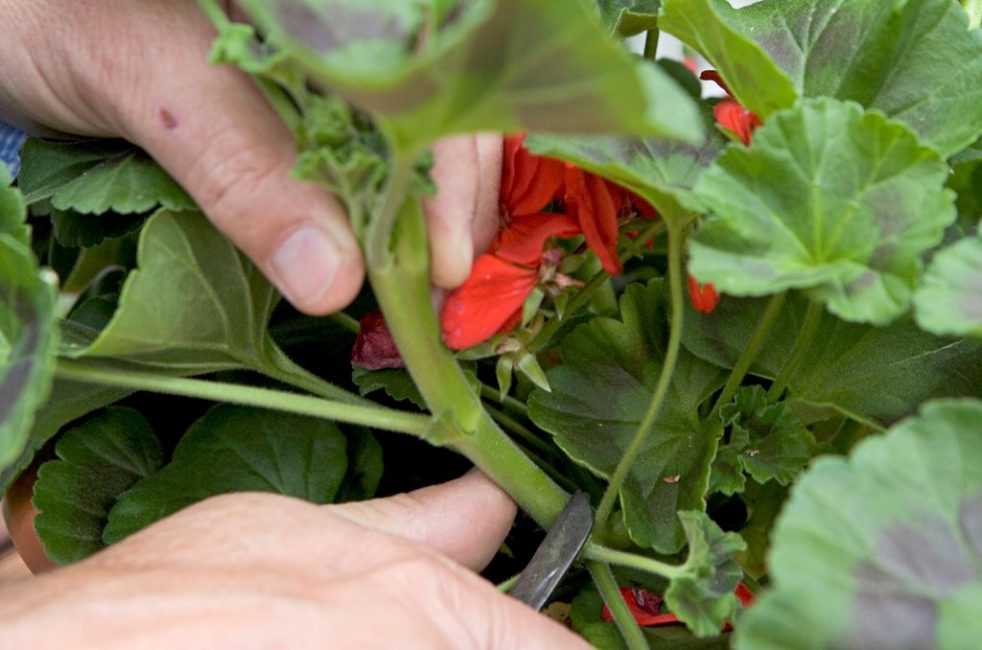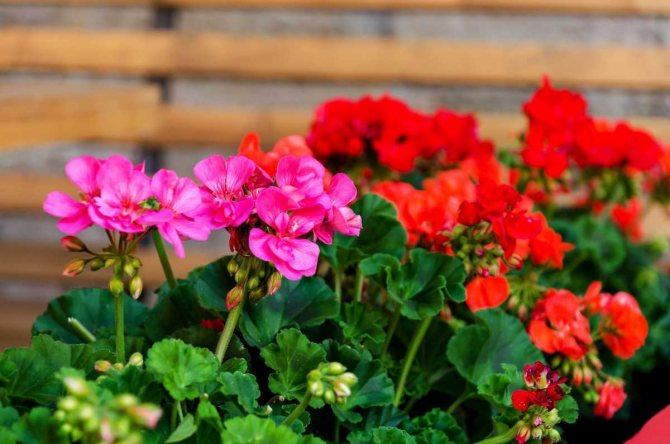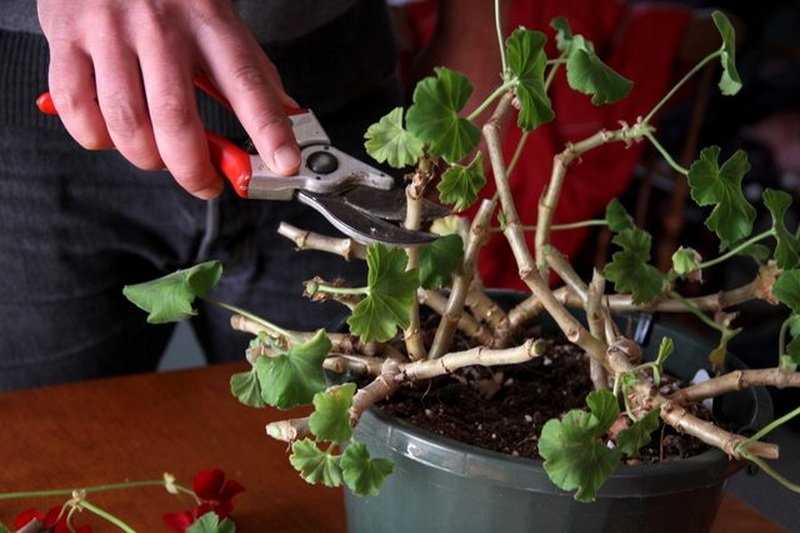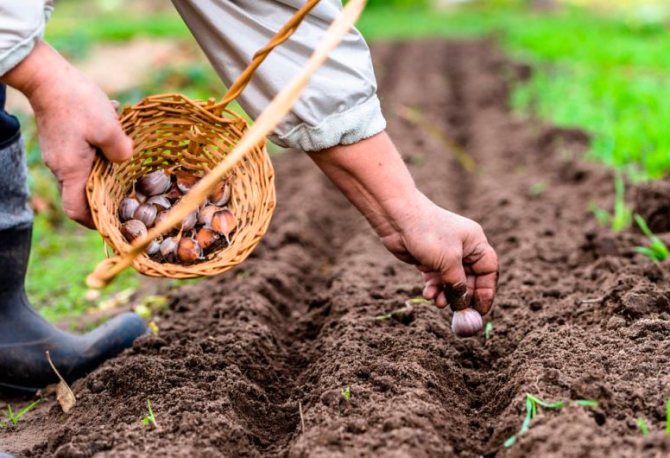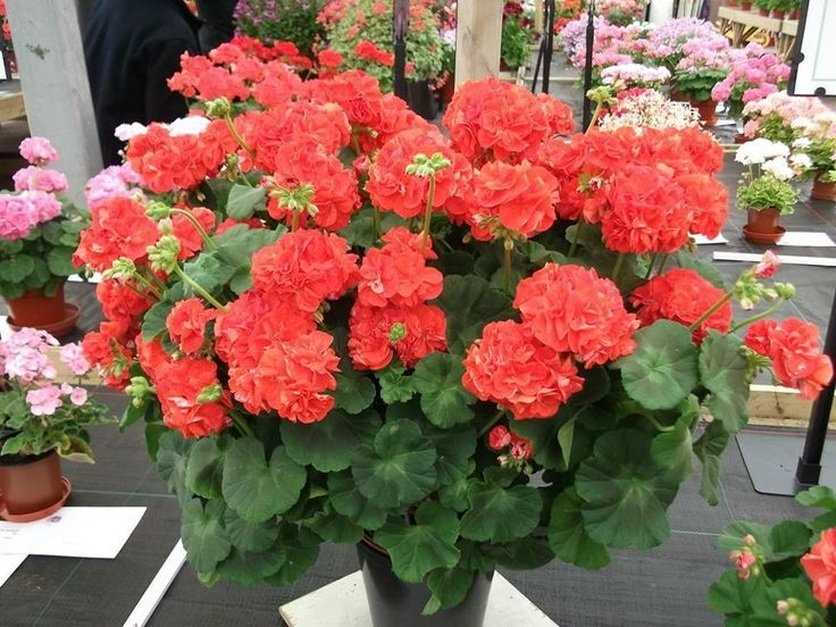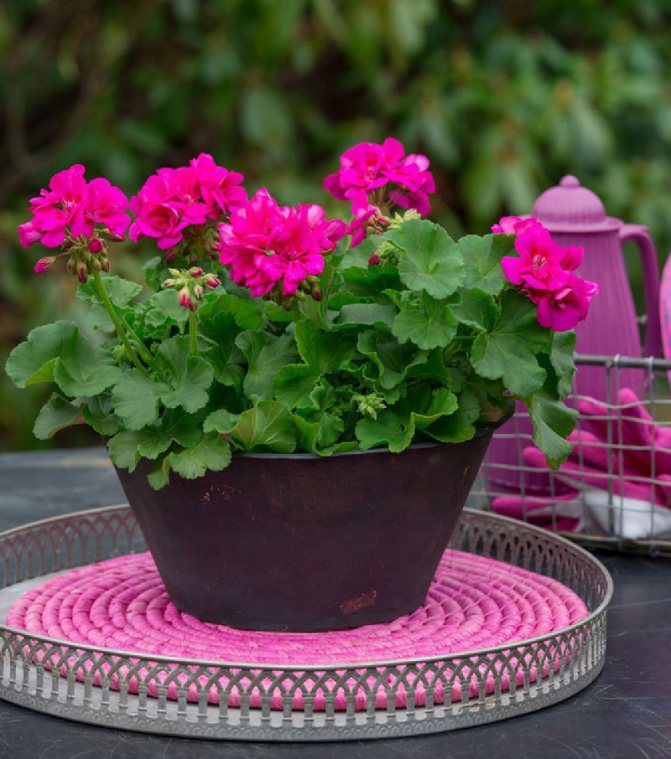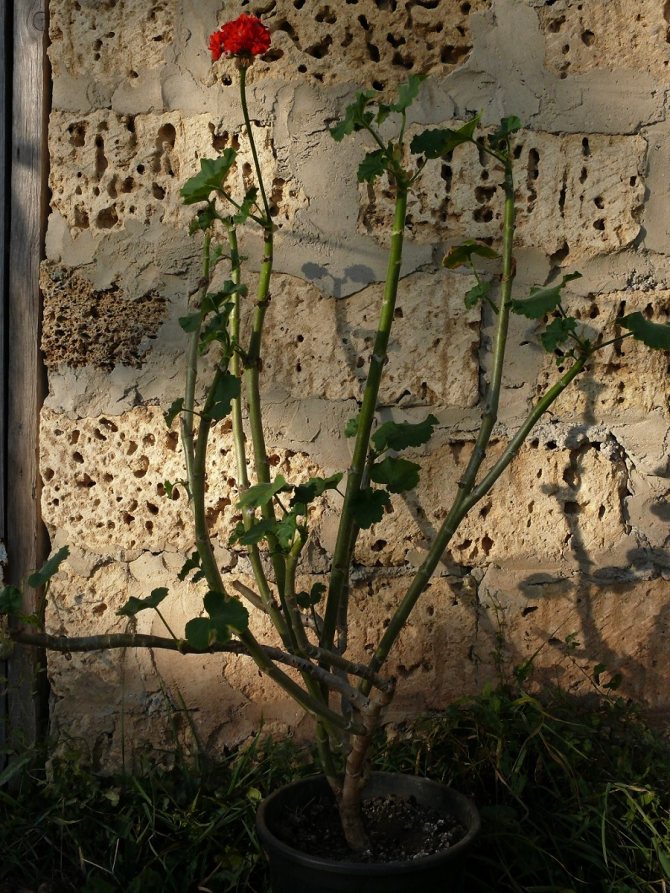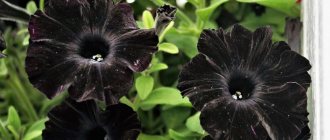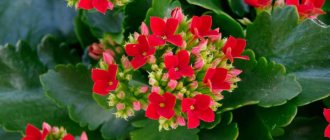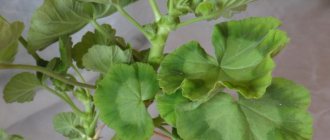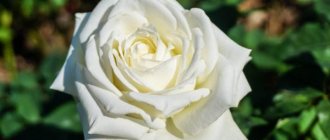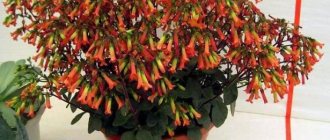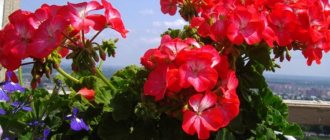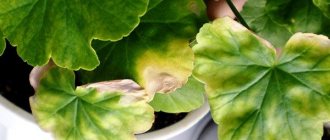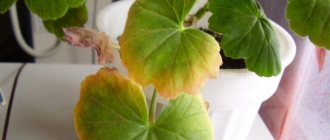Do you need to prune geraniums and when to do it
Novice florists have many questions about geraniums: how to cut it so that it is lush throughout the season, whether it is necessary to do it regularly, etc. Geranium pruning must be done on time and correctly. This guarantees the formation of not only a beautiful, lush bush, but also rejuvenates the flower, significantly increasing its life.
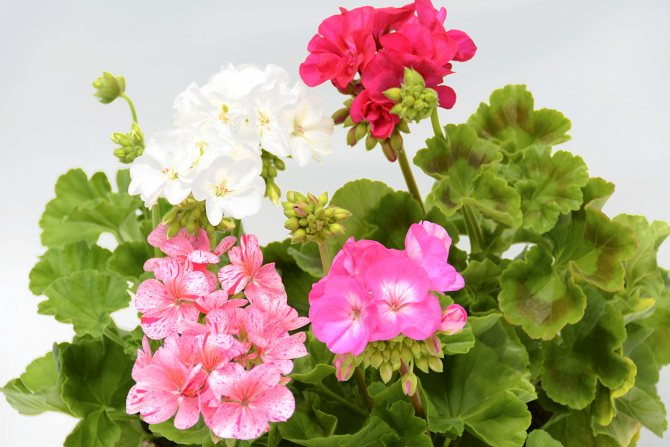
Blooming geranium
Why pruning geraniums
In general, geranium does not require complex maintenance. Pruning a plant must be given due attention. If this is not done, the flower will turn into a huge bush with shoots of different lengths, which will casually stick out in all directions. That is why it is important to get rid of unnecessary branches in a timely manner. Also, cutting a flower contributes to:
- awakening of the lateral stems;
- the formation of an attractive shape;
- the formation of new inflorescences;
- prolongation of flowering time;
- an increase in the splendor of inflorescences;
- reproduction by cut off shoots.
- improving the metabolism of nutrients.
It is recommended to prune the plant every year, otherwise it will cease to bush. There is no need to wait until the shoots grow strongly.
Note! The flower cannot form shoots on its own, pruning on the sides provokes the awakening of the buds, which are in a dormant state. Inflorescences are subsequently formed from these sprouts.
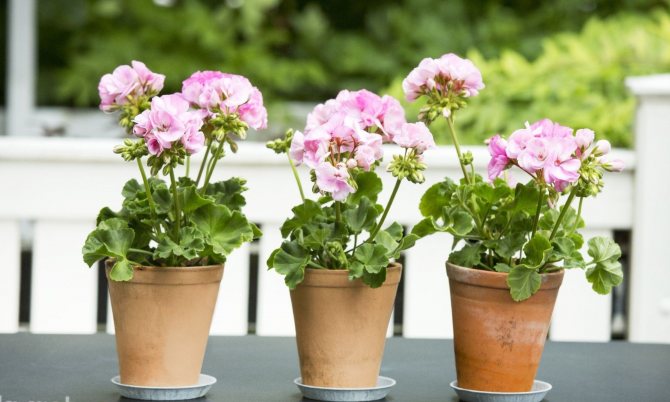

In the first year of flower growth, it is not recommended to cut it off, it is better to wait until it grows
Preparing soil, balcony and room geraniums for pruning
Mostly geranium bushes that do not get sick. Throughout the summer and autumn, they bloom magnificently and give aesthetic pleasure to those around them. For better flowering, it is necessary to properly prepare geraniums for further pruning, depending on the place of growth.
On the garden plot
Geranium - Pruning for lush bloom to bloom and be fluffy
Before the onset of the first cold days and frosts, pelargonium, which grew in the garden, is dug up by the root and, using the transshipment method, is transplanted into a prepared container. Previously, a drainage layer of several centimeters is made in the planting pot. Then they transfer the transplanted plant to the room and do not touch it for 14 days. Only after adaptation can you start the process of cutting the flower.
On a street flower bed
When growing pelargonium outdoors, the storage method in plastic bags comes to the rescue. In a cold room or refrigerator. The method involves pruning after digging up the plant from the street area. Shoots are cut off and shoots are left up to 6 cm, long roots are also shortened.
A moistened soil is left on the roots, the plant is placed in a strong plastic bag and tied so that the inverted stem is visible. You can use a milk carton. The contents of the bag are transferred to the refrigerator in the fruit and vegetable storage box. There, the temperature usually varies within +5 ℃.
On the balcony or windowsill
In the event that the flower grew in a pot on an open terrace or an unglazed balcony, the containers are brought into the room before the cold weather. If pelargonium overwinters on a windowsill in a home apartment, it should be watered once every 30 days.Otherwise, the arid climate during the heating season will affect the development of the flower. This limitation in water is due to the fact that after cutting, there is practically no green leaves left and the plant has nothing to evaporate moisture with. Therefore, in order to avoid diseases, watering is reduced.
Important! Pelargonium pots are best stored in a dark room with an air temperature between 0 and + 10 ℃. Providing such conditions, monthly abundant watering is not required.
If the geranium grew on the windowsill all the time and was not planted in the open ground in the summer, it must also be properly trimmed. To prevent it from stretching out in winter due to lack of light period, part of the leaves is removed from the plant. To achieve uniform flowering of pelargonium, long branches are cut above two internodes.
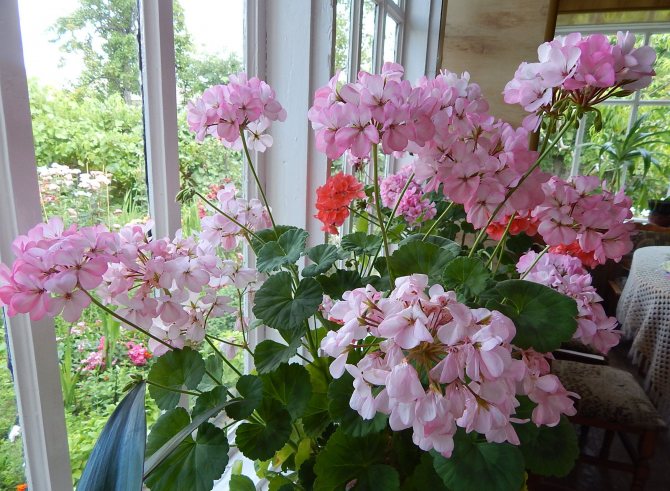

It is necessary to prepare for pruning only those bushes that need rejuvenation.
Description of the plant
Geranium is an ornamental herb belonging to the Geraniev family of the same name. The African continent is considered to be the homeland of this flower. Today, about 300 varieties of geraniums are distributed in their natural environment, both in temperate and tropical areas, and even in mountainous heights.
It is a small flower, up to 60 cm in height. The root system of geraniums is branched, and at the ends of the roots there are special thickenings that play the role of a storage reservoir during drought. The stem of the representatives of the genus is strongly branched into separate shoots, which form a kind of bush.
Depending on the subspecies of the flower, the shape of its leaves can vary greatly. The most common specimens are with a whole, cut or slightly incised leaf blade, but the leaf is sometimes divided into 3-5 parts. On top of the leaf, a light hairline of greenish or grayish shades can be observed.
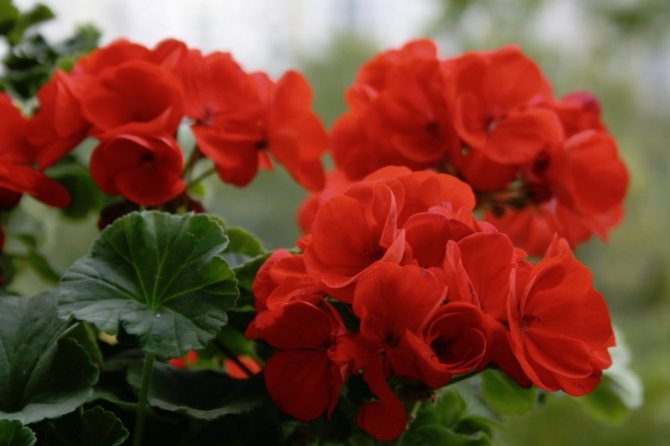

Geranium flowers are often large, single, or collected in cluster-like inflorescences of 3-5 pieces. The most common flowers are purple, white, blue and violet. Depending on the variety, geraniums can bloom from early May to late August. After that, fruit-boxes are formed on the plant, in which numerous seeds ripen.
Geranium pruning technique for lush flowering
How to pinch a petunia for a lush bloom
So that the flower does not hurt and develop correctly, it is important to know how to properly cut geraniums so that it blooms magnificently and for a long time. Gardeners distinguish the following rules and recommendations regarding pruning for active flowering:
- All manipulations must be carried out with a disinfected instrument: a sharpened knife, blade or scissors.
- The incision is made strictly obliquely over the leaf node.
- In no case should the growth point of the flower be damaged (knot on the stem).
- First of all, lateral and long shoots are removed, then those that are in the middle of the plant.
- It is recommended to treat the cut site with wood ash, activated carbon, or it is allowed to use cinnamon powder as an antiseptic. Manipulation will save the bush from rotting or damage by pests.
- After the spring trimming of the bush, geraniums are fed with nitrogen-containing fertilizer in order to accelerate the growth of young branches, the appearance of ovaries.
- If the flower wilted on a geranium in the summer or some kind of shoot began to dry out, they get rid of them. Otherwise, the flower will waste its strength and nutrients on unhealthy parts. The bush is carefully looked after to get rid of diseased growths.
Additional Information! It is not necessary to use tools to remove a young shoot. It is enough to pinch gently with dry, clean hands.
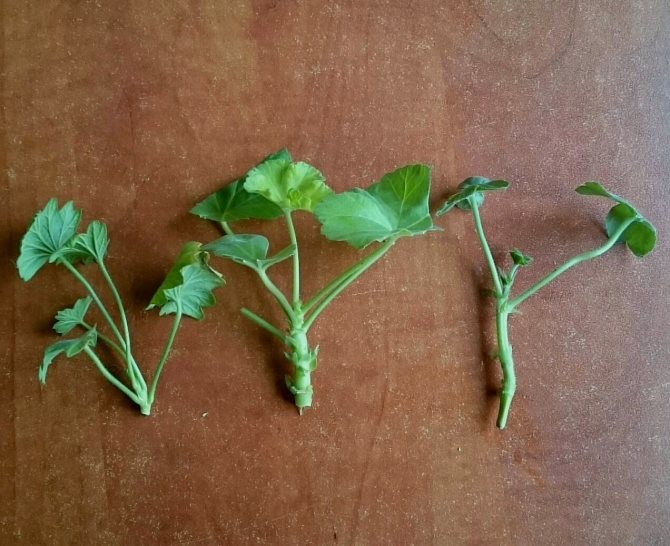

Healthy cut stems can be used to grow good new shrubs
For reproduction of pelargonium with cut off shoots, it is placed in water and left in a lighted place.Avoid direct sunlight. After a while, roots appear on the processes and they are planted in the ground.
Types of flower pruning
Often, gardeners ask themselves: what is the best way to prune geraniums? The procedure is divided into three types, depending on the objectives pursued:
- The main one.
- Seasonal (spring and autumn).
- Topping.
Autumn pruning is considered sanitary. It is carried out only after the plant has faded and is necessary to prepare the plant for wintering. It is done until December. All branches that spoil the appearance (damaged, wilted) are removed from the bush. Shoots that have no leaves left are cut by a third.
Note! Spring pruning is done in late winter or early March. The earlier it is carried out, the earlier the flowering will begin. During the procedure, gardeners cut off elongated and weakened shoots, leaving no more than three buds on them.
The latter type has proven itself well, it is effective when it is precisely known how to pinch a geranium bush. The flower takes on a beautiful shape. The species has many advantages, but you need to know how to pinch geraniums correctly. In winter (from December to January), the bush is not trimmed, since the plant is immersed in a dormant state. This time serves to recuperate.
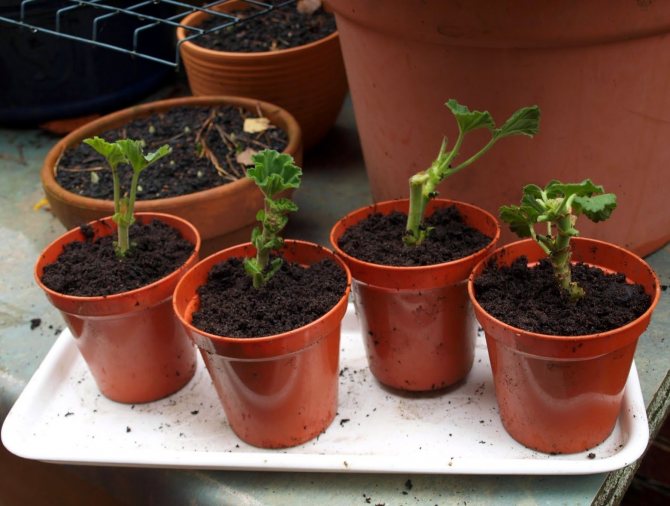

For the winter, geraniums are thoroughly pruned.
Pinching the plant
Pinching means cutting off the point of the plant's growth. The action will lead to the awakening of lateral shoots and the formation of a lush crown. Before proceeding, it is recommended that you learn how to pinch geraniums so that it grows thicker and blooms on time. To form a pelargonium bush without stress, you should use the pinching technique. Carried out as the plant grows. It should be remembered that flowering will begin with a slight delay. In order to carry out the procedure correctly, it is important to remember how to pinch geraniums for lush flowering and adhere to the following scheme:
- Pinching of the upper kidney is done 14 days after transplantation.
- As the stems develop, the manipulation is carried out when there are 4 leaves on the shoot.
- The pinching ends when the required shape of the bush is reached.
The procedure is carried out at any time (best of all from the beginning of spring to the end of summer), except for winter. Excluded from this rule are varieties that bloom in the winter season.
You can pinch geraniums several times over the summer. As a result, new buds are formed on the regrown shoots, the bush grows more, becoming thicker and thicker.
Additional Information! In order for the geranium to lay buds, the pinching process is suspended two months before the start of flowering.
Royal pelargonium is a capricious species. To apply minimal stress to her, it is recommended to limit yourself only to pinching. As a result, the crown will have an attractive spherical shape.
Crown formation
The crown shape can be formed gradually from the moment of planting. To properly trim the crown, you must adhere to the following rules:
- Perform pruning with disinfected and sharp scissors, a knife, to exclude the introduction of infection.
- In the process of thinning the shoots, they begin with those that grow deeper into the plant.
- The stem is cut five mm above the leaf.
- A few days before pruning, the flower is limited to watering.
- You can pinch off the shoots before the summer days, otherwise the bush will not be able to form flowers.
How to form a fluffy pelargonium bush
Pinching the top of the plant stops the growth of the main stem, but does not stop its development at all. This is a great opportunity, by limiting the vertical growth of the flower, to get a luxurious crown.
The essence of pinching
The essence of pinching geraniums is the elementary removal of the growing point, that is, the top of the plant.The flower loses its ability to form shoots from the center of the bush and begins to release side branches. Thus, the plant becomes more luxuriant, bushy, takes on a spherical shape.
Young plants are formed by pinching, and the most favorable time for this is late winter and early spring.
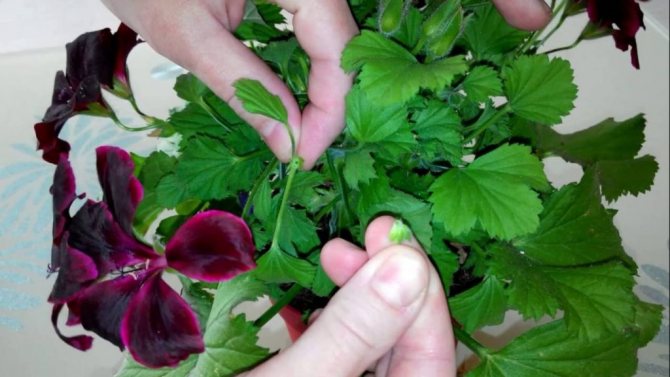

Pinching the top of the royal geranium stops the growth of the central shoot and stimulates the development of lateral
In the case when geranium was grown from a cutting, pinching is done after the ninth to tenth leaf, and if pelargonium grew from a seed - after the seventh. Leave those shoots that grow from the axils of the upper pair of leaves.
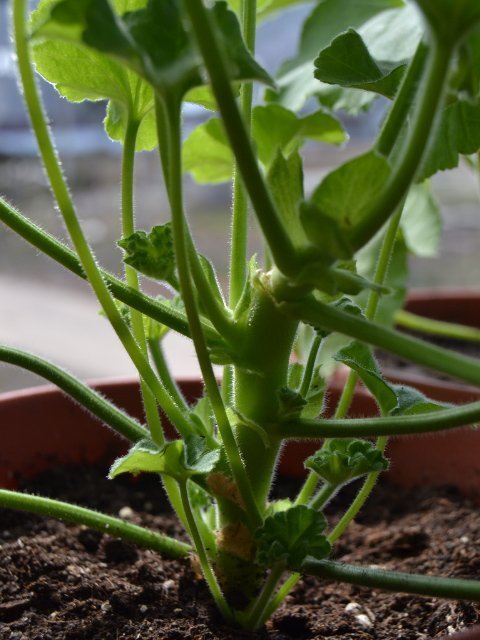

Pinching leads to active growth of young shoots
Mini-geraniums or very young, only rooted plants can be pinched at the initial stage of growth if you want to get a short and round bush.
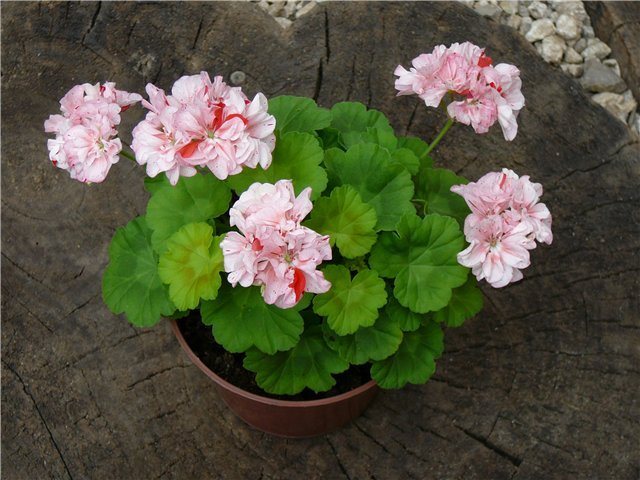

If you pinch a geranium at a young age, it will turn into a small spherical bush.
You need to pinch the plant with clean hands so as not to cause infection and ruin the bush. You can use ash or talcum powder to treat the shoot.
Video: how to pinch geraniums correctly in spring
Choosing the timing of pruning geranium
How to feed hydrangea in spring for lush flowering in the garden
Geranium cannot do without pruning. The procedure is necessary to awaken dormant buds, which, as they develop, will turn into lateral stems.
Worth knowing! Bush pruning is carried out in due time so as not to stress the flower. The main type of manipulation is carried out with the arrival of spring.
How to prune geraniums in the fall
An autumn haircut involves preparation for the winter. The development of the plant in the next season depends on the fidelity of the technology being carried out. The plant fades, after which a number of actions are performed:
- First of all, sluggish inflorescences are removed from the bush, then dry and weakened foliage is cut off.
- Further, the crown is adjusted. Having examined the entire bush, they determine which stems are removed under the root. New bushes can be grown from them in the future.
- After completing the correction, the main shoot is shortened by a third. Pinch young shoots at the 5th point. If this is not done, the plant will spend its energy on them during the wintering period, and will not bloom in the spring.
The "creeping" or ampelous type of pelargonium also needs pruning of shoots that hang too much from the pot. The best time for this is autumn.
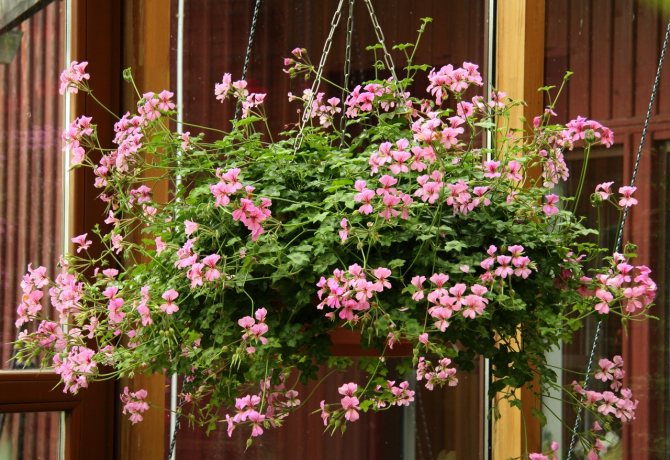

Ivy-leaved pelargonium is pruned in autumn.
From December to mid-February, the flower is dormant. Pruning, pinching, or fertilizing should not be carried out during this period. Only a minimal water supply is sufficient.
Spring pruning of geraniums at home
Spring pruning takes place in March. It allows the plant to form many buds and leaves.
Note! After this pruning, geraniums usually bloom later, but as a result, more inflorescences are formed and their flowering period increases.
Stem pruning is carried out taking into account the parameters of the bush itself. If the bush is large, you should not cut off many shoots. Otherwise, he will not have the strength to form new inflorescences and foliage. As a result, the plant will not please with flowering. A young, fluffy flower allows you to get any shape, unlike large, overgrown bushes. At home, geraniums are also grown, pruning for lush flowering which is done in the fall.
Does it bloom in winter?
Despite the fact that the plant has a rest period in winter, with proper care, geraniums bloom during this period. To do this, the temperature at the location of the flower should be in the range of + 10 ... + 12 ° C, watering - once a decade and a complete absence of fertilizing.
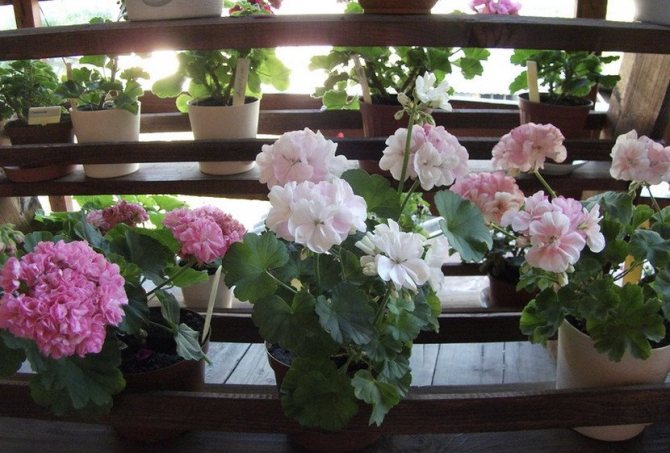

If these conditions are met, geraniums will delight you with abundant and long flowering even in winter.
Find out how and when to plant geraniums at home.
How not to harm geraniums when pruning
The procedure for pruning shoots is not difficult, however, for novice growers, geraniums can acquire an unsatisfactory appearance or even die. Common mistakes include:
- Late pruning. Cutting off the shoots during the flowering period can cause the flowering buds to fall off.
- Cutting a large number of branches. If you remove most of the shoots at one time, the plant will not bloom and grow for a long time.
- Failure to comply with the recommendations for the height of the cut relative to the sheet node. Too high a cut can cause the tip of the shoot to die off, which will significantly worsen the appearance of the bush.
- A large number of haircuts. In this case, the development of buds and buds is suspended.
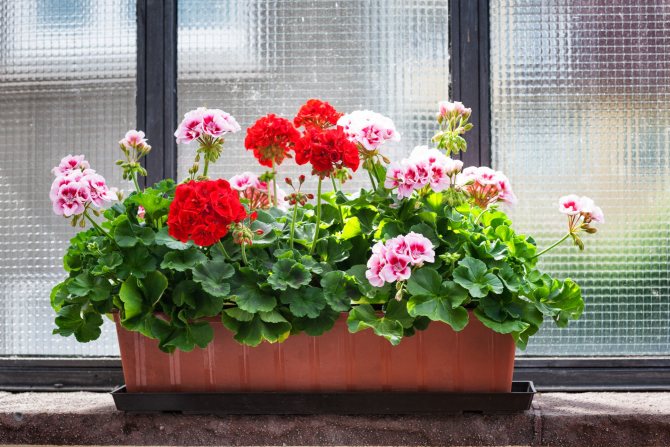

Following all of the pruning guidelines will promote lush flowering in the next season.
Pruning geraniums is an integral part of caring for it. Compared to other colors, she is completely picky. Having given 15 minutes for pruning in the fall, with the onset of summer the flower will delight with the beauty and aroma of inflorescences.
Further care
After pruning, geraniums should be placed in a cool room. The surface of the slices is treated with cinnamon powder or finely crushed charcoal. No special care of the plant is required. It is important to reduce the number of waterings so as not to harm the flower. In order for the flower to quickly acquire young dense shoots, the flower must be fed with fertilizers containing nitrogen. It is important to take care of good diffused lighting.
Pelargonium should be trimmed regularly for more than aesthetic reasons. When excess, dry and diseased shoots are removed, free space is formed. The thinned bush is well ventilated, the risk of infection with fungal diseases is significantly reduced. The shape of the plant becomes more neat, orderly and attractive. The mass of the growth becomes less, but the number of inflorescences and their quality increase.


